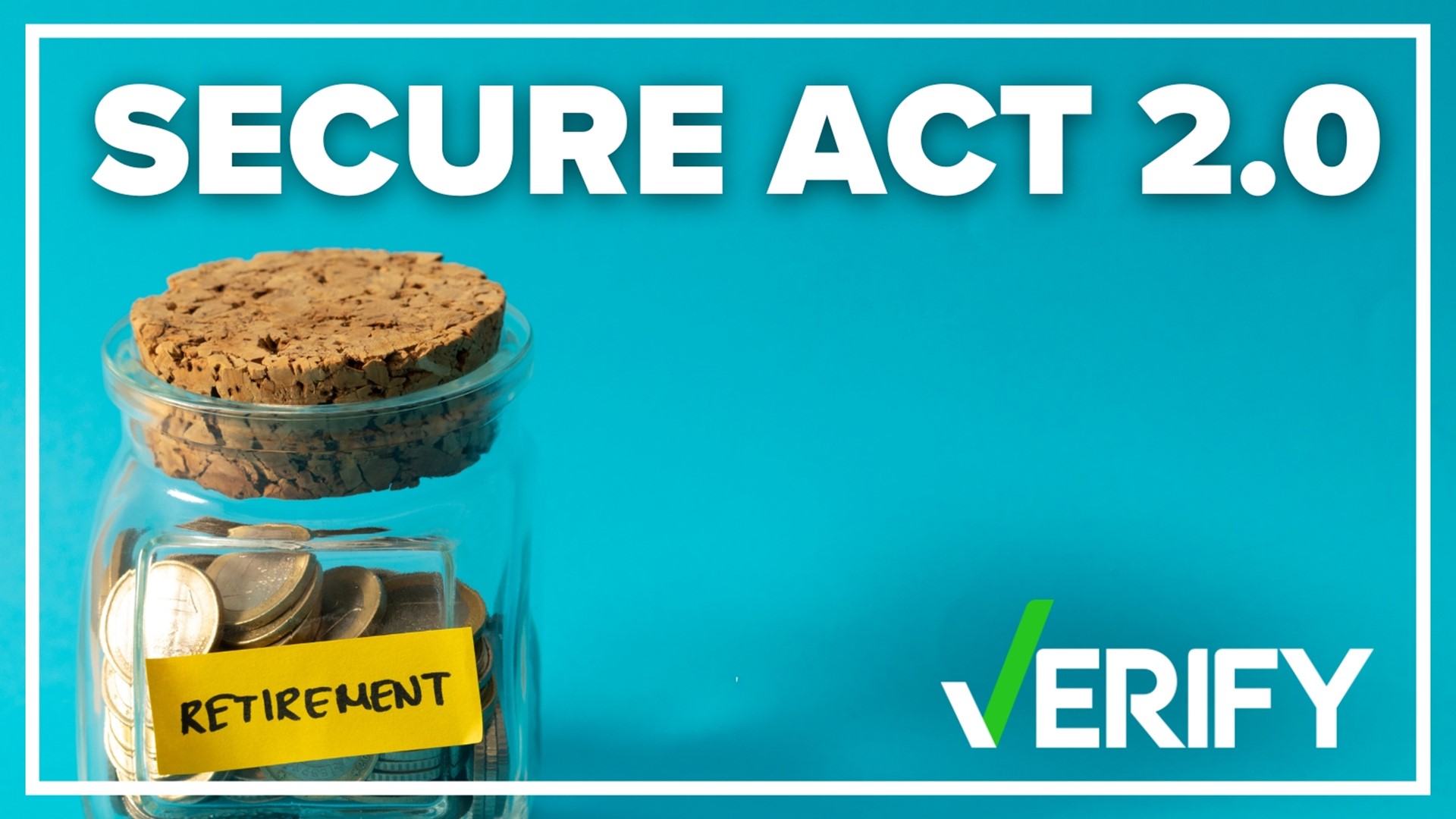CHARLOTTE, N.C. — As tax season is upon us, you are probably also taking a look at other financial accounts like your Roth IRAs or 401 Ks. A new law that went into effect on Jan. 1 means big changes in what you can do with these accounts.
Roth IRAs, 401ks, and saving money can all be complicated subjects. A new law called the Secure Act 2.0 is making some changes to existing rules around retirement accounts. That included 401K 403 B IRA and Roth accounts.
There are 100 provisions in the Secure Act 2.0, but to look at some of the key changes we went to.
OUR SOURCES
The first difference is enrollment. The Secure Act 2.0 now requires 401Ks, and 403 B plans to automatically enroll participants, although there are exceptions for some small businesses.
"What that means is because you took this new role, you are automatically enrolled in the 401, so it's more likely that people are going to contribute to the 401K," Henery said.
Employees have the ability to opt-out if they want to. According to The Secure Act 2.0, auto-enrollment will begin in 2025.
Next, this new act changes when you have to take out money from your retirement accounts. This is also known as taking the Required Minimum Distribution or RMD.
"What we are talking about is you have a retirement account you have never paid taxes could be an IRA or a 403, but you have saved the money, and now, at some age, you must start taking it out of the account," Henery said.
The Secure Act 2.0 now bumps up the age at which you must start taking out money. That cutoff age rises from 72 to 73, and in 10 years, that will move again to 75.
Finally, have you changed jobs and lost track of your 401k accounts?
The Secure 2.0 Act will now make it easy to find those accounts through a searchable database. The Department of Labor will create, within two years, a lost and found retirement saving database that will help you track down those accounts even if you have forgotten all about them.
Contact Meghan Bragg at mbragg@wcnc.com and follow her on Facebook, Twitter and Instagram.
VERIFY is dedicated to helping the public distinguish between true and false information. The VERIFY team, with help from questions submitted by the audience, tracks the spread of stories or claims that need clarification or correction. Have something you want VERIFIED? Text us at 704-329-3600 or visit VERIFY.

